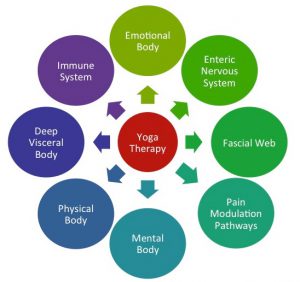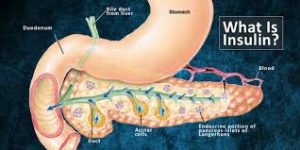Transforming Diabetes (TD) seeks to ease the suffering that the diagnosis and daily management of diabetes creates.
TD utilizes a yogic and a systems approach
Transforming Diabetes is intended to be informative, enlightening and useful.
Any discussion of diet, insulin, exercise or what to do, or how to do it are what I have done to transform my diabetes and achieve balanced blood sugar. You should make no change in diet, insulin or exercise unless you feel comfortable doing so and/or consulting with your doctor.
Transforming Diabetes is designed for those who:
1.) Have Diabetes
2.) Know someone who has diabetes and either cares for them or wishes to know more about the disease
3.) Healthcare professionals who desire to explore a different approach and perspective
There are two “types” of diabetes.
20 million Americans are afflicted with the condition and the numbers are rising to epidemic levels.
About 95% of those afflicted have what has been called late onset diabetes or Type 2 Diabetes.
The remaining 5% are diagnosed with Juvenile Diabetes or Type 1 (T1D).
They are similar in that the diagnosis is based, primarily, on the elevated blood sugar levels in the body.
Yet they are very different conditions.
I will be first talking about Type 1 and introduce Type 2 as we progress.
I encourage those affected by or interested in Type 2 to follow along from the beginning because as Type 2 progresses it effectively turns into Type 1.
T1D is usually diagnosed in children or adolescents.
It is considered an Immune deficiency disease because for, some reason, shortly before diagnosis, the immune system decides that the cells in the pancreas that produce insulin are invaders and should be eliminated.
Within a few months the job is done and the body is unable to produce any insulin.
If you are interested in finding out more about how or why this happens to a human body then I encourage you to do some additional research.
I can tell you that the medical research community is still a bit baffled here.
They believe it has some genetic component to it.
They are also looking at a virus and outside agents like chemicals and cow’s milk.
Nevertheless, it is important to know that the reason why the condition arises is because of the immune system reaction.
Recently, they have come out with some other theories as well.
There are people who have T1D as a result of damage to the pancreas but this is rare.
As soon as a Type 2 requires injectable insulin (there is no other kind, no pills, they did try an inhaler but that flopped), they are T1D, in my book.
Also, it appears as though T1D is being diagnosed more and more in people who have reached adulthood.
This may bode well for the outside agent or virus cause.
So, what is insulin?
Insulin is a critical hormone that is produced by the islet cells in the pancreas.
It is an integral component in the digestion and metabolism of food, especially the carbohydrates and fat we eat.
The body needs to eat to survive and insulin acts as a kind of key that opens the doors of the cells of the body to receive the food (energy) in the form of glucose that the body has transformed and placed in the blood for circulation to the entire organism.
When a human body is unable to produce insulin it slowly starves to death.
Glucose is unable to get from the blood to the cells.
The key (insulin) to unlock the cell door is not there. Without insulin the blood sugar level in the body rises and, at the same time this starvation is going on, other systems in the body kick into action to try and feed it.
The liver begins to break down the stored sugar it has.
The kidneys try to eliminate the excess sugar and suck all the water from the body.
All hell breaks loose.
Before the invention of injectable insulin (around 1920) everyone died in a matter of weeks.
What we have here is a critical system failure.
Insulin quality, delivery systems, ability to monitor blood sugar levels and many other components to the management of diabetes has improved over the years, however, what is required is the implementation, understanding and daily monitoring of a manual system in place of an automatic perpetual motion system that a normal body has.
We will be talking about the manual system that must be built, understood, integrated and monitored.
But there is so much more to this disease.
Believe me I know.
I know about the anger, the depression, the anxiety, the panic, the worry, the sadness, the manipulation, the deception.
I know how hard it can be and is.
I know the feeling of hopelessness and helplessness. I stayed in it for about 2 years in my early 30′s. I know.
I am not a parent of a child with T1D but I can imagine.
I think it is worse for you then for us. I really do.
It is hard enough to have to re-create and monitor this metabolic function/system that has failed……We also must deal with all of the consequences and effects it can produce.
Add to that the feeling of low blood sugar, high blood sugar, rapidly rising or rapidly decreasing blood sugar and worry about future complications associated with the disease and you have a situation that is difficult, challenging and sometimes seemingly impossible.
This series of posts seeks to provide you with a few different perspectives and several tools with which to confront, understand and master this most difficult challenge.
Different ways of “seeing” this condition will be introduced and discussed.
We will introduce and discuss acupuncture, meditation, food, massage, cranio sacral therapy, vitamins, supplements, strategies of emotional and mental acceptance, spiritual insights, yoga and other modalities.
Yoga has been a very useful metaphor for what I have to do on a daily basis to live with diabetes. Several yogic perspectives and practices will be introduced throughout.
Transforming Diabetes focuses on diabetes, however, the process is universal in nature and can be applied to any chronic condition whether it be anxiety, depression, relationship issues, health, career or financial.







